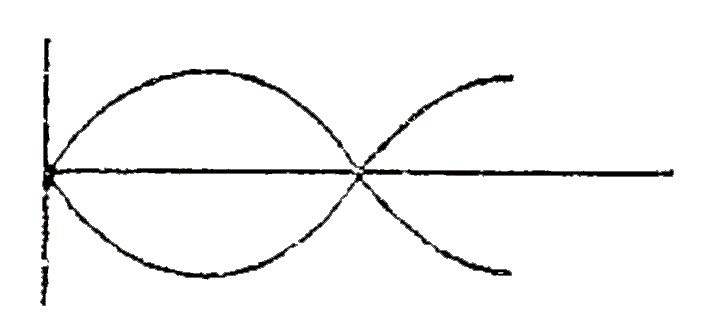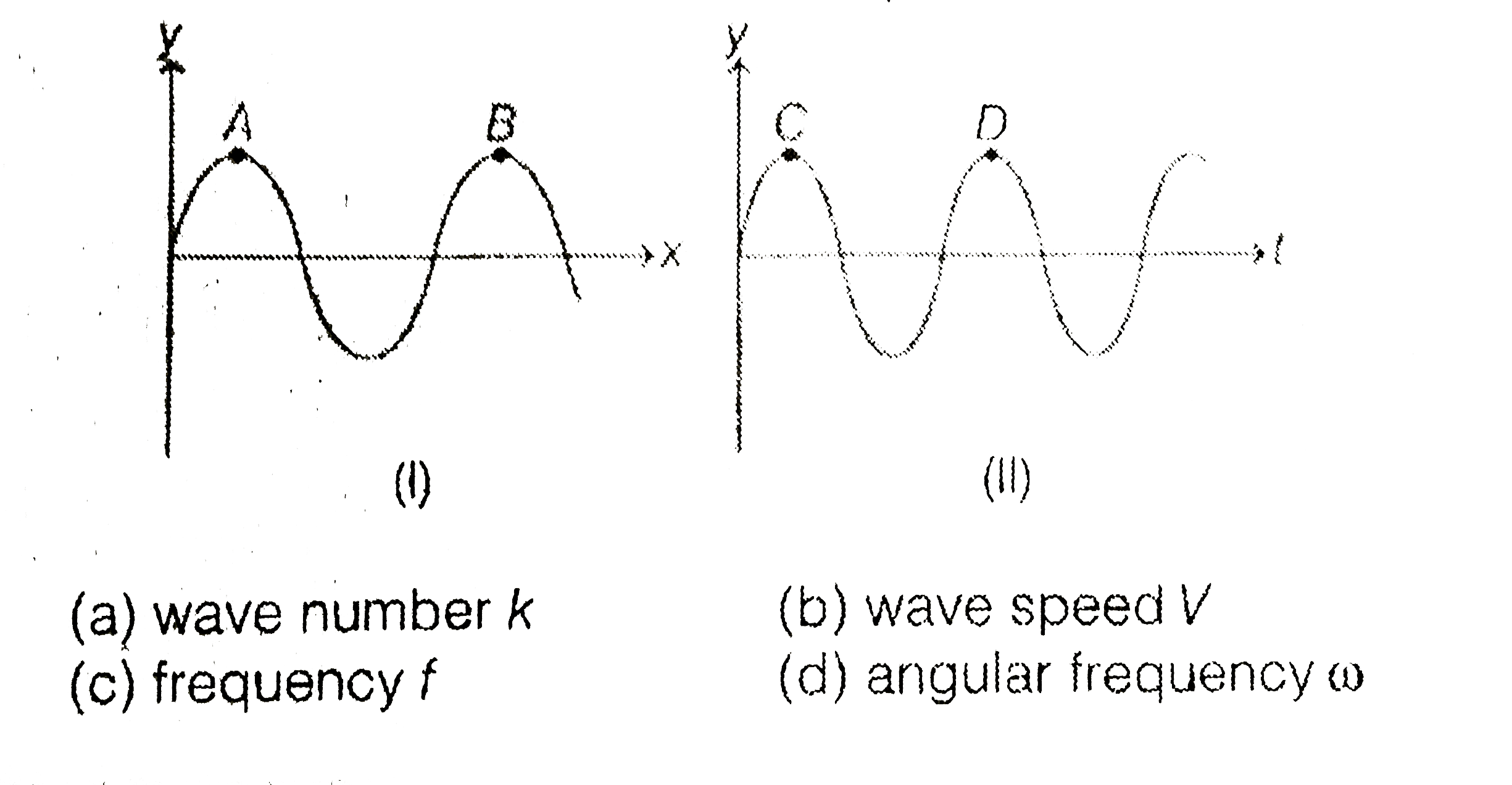Three resonant frequencies of string with both rigid ends are 90, 150 and 210 Hz. If the length of the string is 80 cm, what is the maximum possible speed of the transverse wave in the string?
The correct Answer is:96
n2l√Tμ=90
n+12l√Tμ=150,n+22l√Tμ=210
∴nn+1=90150⇒n=1.5
∴ 
∴n2l√Tμ=90=n2lV
V2l=90n=901.5=60
∴V4l=30
(b) 3V4L=90 and 5V4l=150
and 7V4l=210
(c) overtones are 1st,2nd,3rd
(d) v4×0.8=30⇒v=96m/sec.
Topper's Solved these Questions
- WAVE ON STRING BOOK - RESONANCE ENGLISHCHAPTER - WAVE ON STRING EXERCISE - Exercise- 2 PART III
15 Videos
- WAVE ON STRING BOOK - RESONANCE ENGLISHCHAPTER - WAVE ON STRING EXERCISE - Exercise- 2 PART IV
9 Videos
- WAVE ON STRING BOOK - RESONANCE ENGLISHCHAPTER - WAVE ON STRING EXERCISE - Exercise- 2 PART I
21 Videos
- TRAVELLING WAVESBOOK - RESONANCE ENGLISHCHAPTER - TRAVELLING WAVESEXERCISE - Exercise- 3 PART II
7 Videos
- WAVE OPTICSBOOK - RESONANCE ENGLISHCHAPTER - WAVE OPTICSEXERCISE - Advanced Level Problems
7 Videos
Similar Questions
The plane wave represented by an eqution of the form y = f(x-vt) implies the propagation along the positive x-axis without chang of shape with constant velocity v. Then
View SolutionA pulse is started at a time t=0 along the +x directions an a long, taut string. The shaot of the puise at t=0 is given by funcation y with
y=⎧⎪ ⎪⎨⎪ ⎪⎩x4+1for−4<x≤0−x+1for0<x<10 otherwise
here y and x are in centimeters. The linear mass density of the string is 50g/m and it is under a tension of 5N,
the shape of the string is drawn at t=0 and lthe area of the pulse elclosed by the string and the x−string is measured. It will be equal to
View Solutionthe same progressive wave is reprsented by two group I and II. Graoup I shows how the displacement 'y' varies with the distance x along the wave at a given time. Graph II shows how y varies with time t at a given point on the wave. The ratio of measurements AB to CD, marked on the curvse m repersents.

View SolutionA string is stretched betweeb fixed points separated by 75.0cm. It observed to have resonant frequencies of 420Hz and 315Hz. There are no other resonant frequencies between these two. The lowest resonant frequency for this strings is
View SolutionTwo parallel beams of light P and Q are incident normally on a prism and the transmitted rays are brought to focus with the help of a convergent lens as shown in Fig. 2.23. If the intensities of the upper and lower beams immediately after transmission from face AC are 4I and I, respectively, find the resultant intensity at the focus.
View SolutionA 660 Hz tuning fork sets up vibration in a string clamped at both ends. The wave speed for a transverse wave on this string is 1220ms−1 and the string vibrates in three loops. (a) Find the length of the string. (b) If the maximum amplitude of a particle is 0.5 cm, write a suitable equation describing the motion.
View SolutionThree resonant frequencies of a string are 90, 150 and 210 Hz. (a) Find the highest possible fundamental frequency of vibration of this string. (b) Which harmonics of the fundamental are the given frequencies ? (c) Which overtones are these frequencies ? (d) If the length of the string is 80 cm, what would be the speed of a transverse wave on this string ?
View SolutionA 75 cm string fixed at both ends produces resonant frequencies 384 Hz and 288 Hz without there being any other resonant frequency between these two . Wave speed for the string is
View SolutionThree consecutive resonant frequencies of a string are 90, 150 and 210 Hz . If the length of the string is 80 cm , what would be the seed (in m//s ) of a transverse wave on this string ?
View SolutionA string of length 100 cm has three resonant frequencies, 120 Hz, 200 Hz and 280 Hz. If a node is formed at the end of the string, the speed of the transverse wave on this string is:
View SolutionA string of length 100 cm has three resonant frequencies, 120 Hz, 200 Hz and 280 Hz. If a node is formed at the end of the string, the speed of the transverse wave on this string is:
View SolutionThe speed of a transverse wave on a string is 160m/s. If the three resonant frequencies of this string respectively are 160Hz, 240Hz and 400Hz, the length of the string is
View SolutionA 4.00-m long string, clamped at both ends, vibrates at 2.00×102 Hz. If the string resonates in six segments, what is the speed of transverse waves on the string?
View SolutionA 660 Hz tuning fork sets up vibration in a string clamped at both ends. The wave speed for a transverse wave on this string is 220ms−1 and the string vibrates in three loops. (a) Find the length of the string. (b) If the maximum amplitude of a particle is 0.5 cm, write a suitable equation describing the motion.
View SolutionThree resonant frequencies of a string are 90, 150 and 210 Hz. (a) Find the highest possible fundamental frequency of vibration of this string. (b) Which harmonics of the fundamental are the given frequencies ? (c) Which overtones are these frequencies ? (d) If the length of the string is 80 cm, what would be the speed of a transverse wave on this string ?
View SolutionThree resonant frequencies of a string are 90, 150 and 210 Hz.
Which harmonics of the fundamental are the given frequencies?
View Solution

